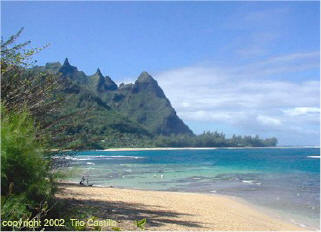|
||||||
|
CLIMATE
Indonesia straddles the equator, and days are all roughly the same length. The sun rises promptly at 0600 and sets just as predictably at 1800. The country has a typical monsoonal equatorial climate with only two seasons: wet (Nov.-April) and hot (May-Oct.). It's always hot and always humid, with the temperature changing very little, so in reality the hot season generally is only slightly hotter and just not quite so wet as the wet season. Sometimes it rains so hard it's like standing under a tepid shower turned on full. With a roar the skies upend, spilling a solid wall of water on the earth below, flattening plants and flowers. The wettest places are in the mountains of all the main islands. |
|
|
Locales east of Solo in Central Java have sharply defined dry seasons, the duration increasing the closer the area to Australia. The Palu Valley in Central Sulawesi receives less than 50 cm of rain per year. In the far southeastern islands of Timor and Roti, the dry season can last up to seven months. Sumatra and Kalimantan have no dry season. But don't put off your trip just because of the wet. When it rains the dust on the roads is reduced, flowers bloom, it's fresher and cooler, and everywhere it's green, like bright wet paint. With an extensive and ever-improving surfaced road system throughout the islands, the rains shouldn't slow you down at all. Indonesians look upon climate differently than people in the West. Warmth is associated with "hard work, pain, terror, bad," while in the West most think "pleasant, cozy, secure, healthy." Indonesians prefer to socialize and promenade in the cool of the evenings. Because the hard winters of North America and Europe never occur here, there isn't the drive to finish tasks before the season changes. This explains in part the Indonesian jam karet (rubber time) mentality.
Volcanos
Indonesia is the place to see volcanic craters seething with bubbling, steaming gray mud, rocks covered in bright yellow sulphur, and vast rivers of black gaseous lava. The trapped heat under the earth is an almost limitless source of alternative energy. It's estimated there are at least 217 geothermal locations in Indonesia with a total potential of 16,035 megawatts. |
|

